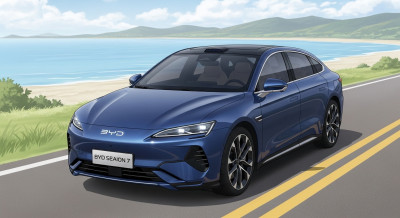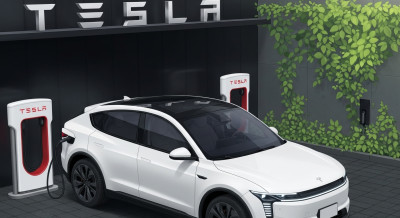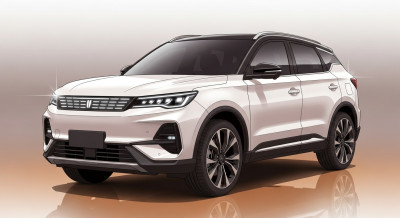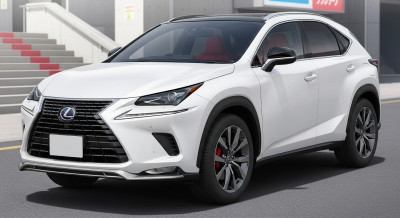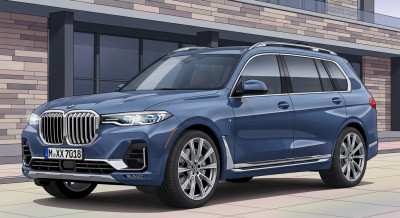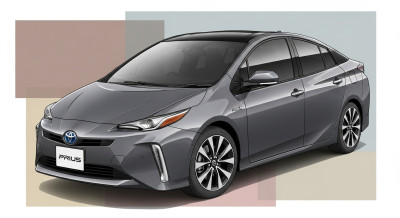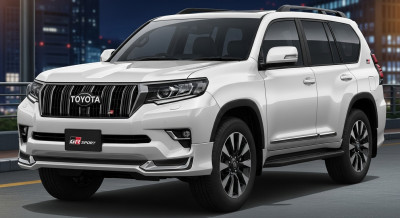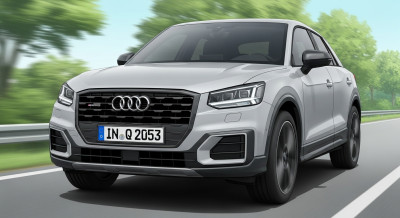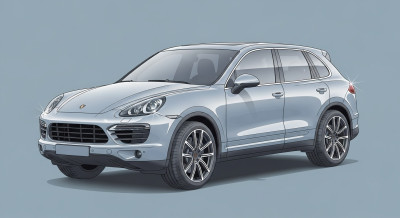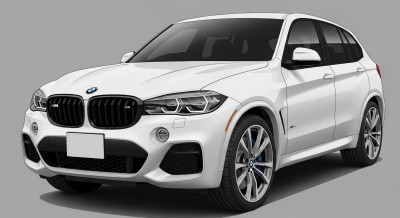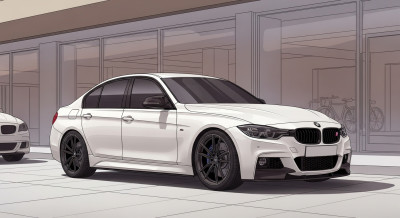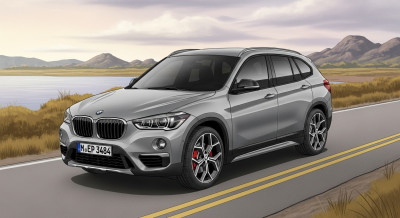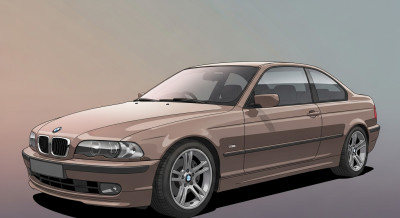2020 Opel Corsa - INTERIOR
Sporty Opel Corsa GS Line, comfortable Corsa Elegance
The new Opel Corsa is offered in four trim levels. Even the entry-level version has many technologies and comfort-enhancing extras, such as typical Opel features like steering wheel heating and heated leather seats with massage function for the driver. The assistance systems include, for example, front collision warning, intelligent cruise control, lane keep assist and speed sign recognition. Above the base version, three equipment lines with different emphases address different customer groups. The Corsa Edition adds the most popular extras, the Corsa Elegance is trimmed for maximum comfort and the Opel Corsa GS Line combines additional sporty features. The equipment philosophy, which Opel is presenting for the first time with the Corsa, will soon also be available for other Opel models.
In the Opel Corsa Elegance (from €17,850 in Germany, RRP including VAT), a six-way adjustable front passenger seat, armrest with storage compartment as well as LED headlights in typical Opel-look and LED fog lights make journeys even more relaxed. Chrome decor, attractive stitching and other details make the Elegance especially attractive. The sporty ambitions of the GS Line as dynamic model variant are obvious - inside as well as out. Sport seats for driver and front passenger, as well as aluminium sport pedals, a black headliner and red décor on the instrument panel, underline the sporty feeling. The GS Line can be recognized immediately by a chrome tailpipe and sporty looking bumpers at the front and rear. A Sport mode delivers even more dynamic steering and throttle response.
Prices for the Opel Corsa GS Line start from €19,880 in Germany (RRP including VAT).
New engines: Ideal balance between efficiency and performance
The sixth-generation Opel Corsa's all-new engine portfolio aims to offer customers an ideal balance between efficiency and an engaging drive. Compared with the current power units, the new engines return significantly reduced fuel consumption and emissions while retaining similar power outputs.
The improvements begin straight away with the base 55kW (75hp) 1.2 - NEDC combined fuel consumption is 4.1 l/100km. This is a substantial improvement in comparison to the current 1.2 model with 51kW/70hp and its NEDC combined consumption of 5.9-5.6 l/100km and 134-128g/km CO2.
Higher performance is supplied by the award-winning, three-cylinder, direct-injection turbocharged engine family (Engine of the Year 2015-2018), also with 1.2-litres displacement. The all-aluminium engines produce 74kW (100hp) or 96kW (130hp). With the 74kW (100hp) engine, the new Opel Corsa needs 4.4-4.2 l/100km NEDC combined. The 1.4-litre predecessor, also with 74kW (100hp) consumed 5.8-5.4 l/100km combined according to NEDC (WLTP: 6.7-6.5 l/100km, 151-146g/km CO2). Even with the most powerful 96kW (130hp) version, which has no equivalent in the current Corsa range, the preliminary fuel consumption and emissions figures remain moderate.
In addition to the engines, the powertrain improvements also include the transmissions.
The 55kW (75hp) entry-level engine is fitted with a five-speed manual gearbox as standard.
With the 74kW (100hp) unit, customers can choose from a six-speed manual or a smooth eight-speed automatic. Adaptive shift programmes and Quickshift-technology represent the state-of-the-art in the Opel Corsa's market segment. Drivers can shift gears themselves via the paddles at the steering wheel.
The top-of-the-line, 96kW (130hp) 1.2 Direct Injection Turbo is always combined with the eight-speed automatic transmission.
High-tech and high efficiency
The three petrol engines are joined by a lively 1.5-litre diesel with 75kW (102hp) and maximum torque of 250Nm.
For optimum exhaust after-treatment, the emissions reduction system - consisting of a passive oxidation catalyst/NOx adsorber, AdBlue injector, SCR catalyst and Diesel Particulate Filter (DPF) - is grouped together as a compact single unit, as near as possible to the engine. The NOx adsorber acts as a cold start catalyst, reducing NOx emissions at temperatures below the SCR light-off.
Auto INTERIOR
For New Car Videos - Subscribe: http://bit.ly/AutoINTERIOR
Note: (Copying music is prohibited
Sporty Opel Corsa GS Line, comfortable Corsa Elegance
The new Opel Corsa is offered in four trim levels. Even the entry-level version has many technologies and comfort-enhancing extras, such as typical Opel features like steering wheel heating and heated leather seats with massage function for the driver. The assistance systems include, for example, front collision warning, intelligent cruise control, lane keep assist and speed sign recognition. Above the base version, three equipment lines with different emphases address different customer groups. The Corsa Edition adds the most popular extras, the Corsa Elegance is trimmed for maximum comfort and the Opel Corsa GS Line combines additional sporty features. The equipment philosophy, which Opel is presenting for the first time with the Corsa, will soon also be available for other Opel models.
In the Opel Corsa Elegance (from €17,850 in Germany, RRP including VAT), a six-way adjustable front passenger seat, armrest with storage compartment as well as LED headlights in typical Opel-look and LED fog lights make journeys even more relaxed. Chrome decor, attractive stitching and other details make the Elegance especially attractive. The sporty ambitions of the GS Line as dynamic model variant are obvious - inside as well as out. Sport seats for driver and front passenger, as well as aluminium sport pedals, a black headliner and red décor on the instrument panel, underline the sporty feeling. The GS Line can be recognized immediately by a chrome tailpipe and sporty looking bumpers at the front and rear. A Sport mode delivers even more dynamic steering and throttle response.
Prices for the Opel Corsa GS Line start from €19,880 in Germany (RRP including VAT).
New engines: Ideal balance between efficiency and performance
The sixth-generation Opel Corsa's all-new engine portfolio aims to offer customers an ideal balance between efficiency and an engaging drive. Compared with the current power units, the new engines return significantly reduced fuel consumption and emissions while retaining similar power outputs.
The improvements begin straight away with the base 55kW (75hp) 1.2 - NEDC combined fuel consumption is 4.1 l/100km. This is a substantial improvement in comparison to the current 1.2 model with 51kW/70hp and its NEDC combined consumption of 5.9-5.6 l/100km and 134-128g/km CO2.
Higher performance is supplied by the award-winning, three-cylinder, direct-injection turbocharged engine family (Engine of the Year 2015-2018), also with 1.2-litres displacement. The all-aluminium engines produce 74kW (100hp) or 96kW (130hp). With the 74kW (100hp) engine, the new Opel Corsa needs 4.4-4.2 l/100km NEDC combined. The 1.4-litre predecessor, also with 74kW (100hp) consumed 5.8-5.4 l/100km combined according to NEDC (WLTP: 6.7-6.5 l/100km, 151-146g/km CO2). Even with the most powerful 96kW (130hp) version, which has no equivalent in the current Corsa range, the preliminary fuel consumption and emissions figures remain moderate.
In addition to the engines, the powertrain improvements also include the transmissions.
The 55kW (75hp) entry-level engine is fitted with a five-speed manual gearbox as standard.
With the 74kW (100hp) unit, customers can choose from a six-speed manual or a smooth eight-speed automatic. Adaptive shift programmes and Quickshift-technology represent the state-of-the-art in the Opel Corsa's market segment. Drivers can shift gears themselves via the paddles at the steering wheel.
The top-of-the-line, 96kW (130hp) 1.2 Direct Injection Turbo is always combined with the eight-speed automatic transmission.
High-tech and high efficiency
The three petrol engines are joined by a lively 1.5-litre diesel with 75kW (102hp) and maximum torque of 250Nm.
For optimum exhaust after-treatment, the emissions reduction system - consisting of a passive oxidation catalyst/NOx adsorber, AdBlue injector, SCR catalyst and Diesel Particulate Filter (DPF) - is grouped together as a compact single unit, as near as possible to the engine. The NOx adsorber acts as a cold start catalyst, reducing NOx emissions at temperatures below the SCR light-off.
Auto INTERIOR
For New Car Videos - Subscribe: http://bit.ly/AutoINTERIOR
Note: (Copying music is prohibited)
 LEXUS
LEXUS  AUDI
AUDI  PORSCHE
PORSCHE  ROLLS-ROYCE
ROLLS-ROYCE  LAND ROVER
LAND ROVER  FERRARI
FERRARI  MASERATI
MASERATI  CADILLAC
CADILLAC  CHRYSLER JEEP
CHRYSLER JEEP 















